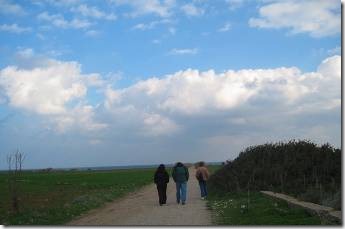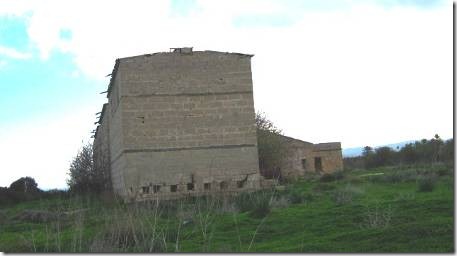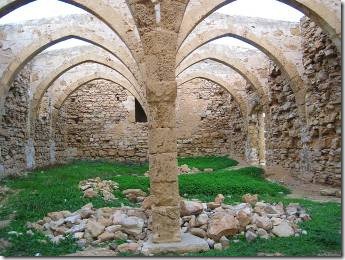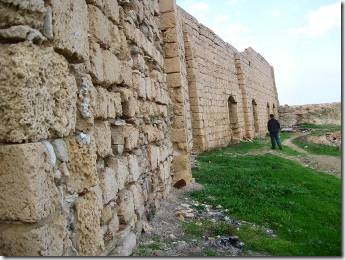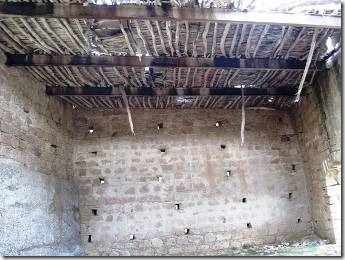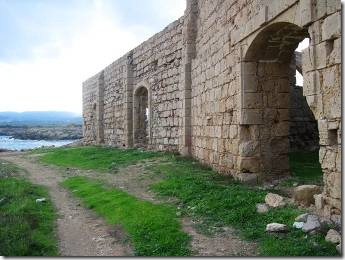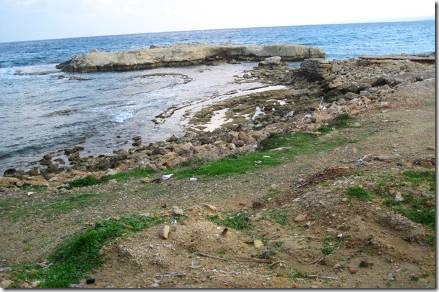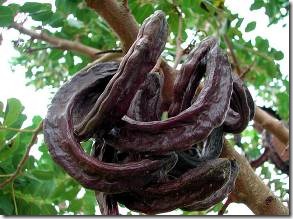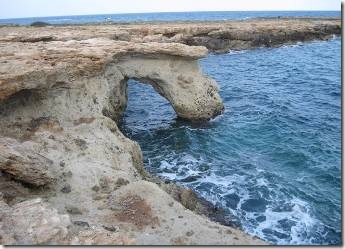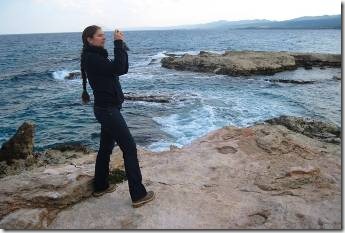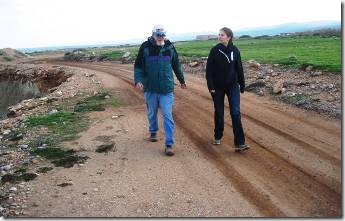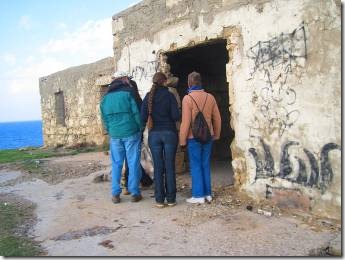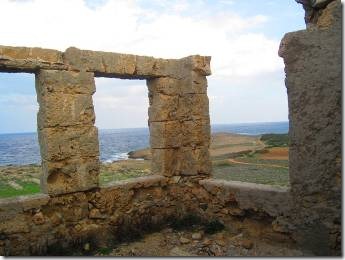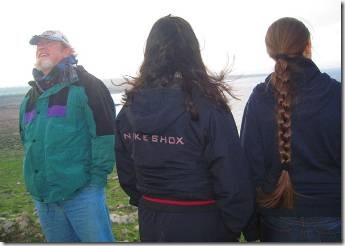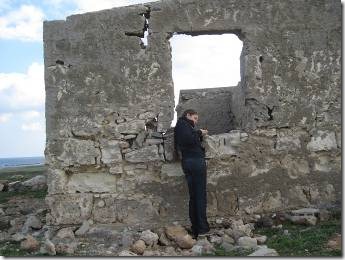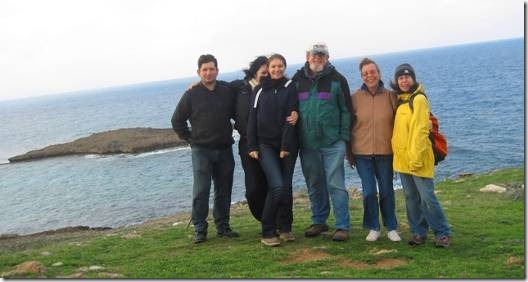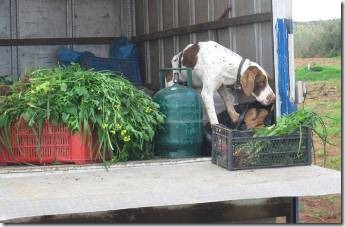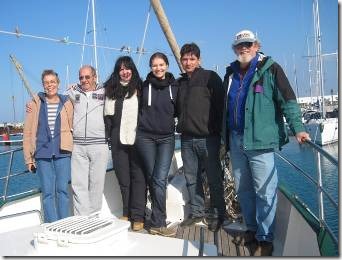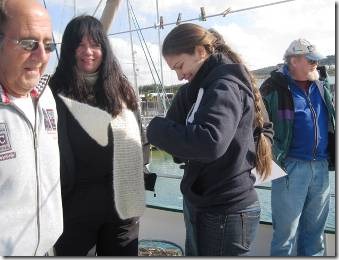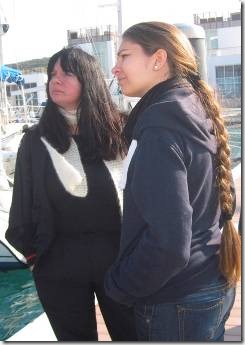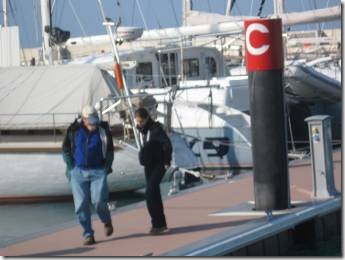It’s Thursday and so as long as there is not rain, it’s a Deks Walks Day. Our walk today began close to town so Robin and Julia, back for a few days from Famagusta where they celebrate Christmas and New Year’s Eve, came to get us in their car. Usually we meet at Deks but that is the other direction from town, so Denise came to us. Her daughter and son-in-law are visiting so they came too. All of the walks provide good company, great scenery, and good exercise. Most include really interesting structures and some history. Today’s walk took us to the old carob warehouses, so of course, I had to start looking for information about the carob industry and one thing always leads to another. So here it all is. If you skip most of it, try to read the write up about the Carob Festival by Sue Steel. It’s really quite funny. I don’t know her; I found it researching the festival. Funny enough, because I have mentioned carob in past emails, my carob research kept leading me back to our website!
Ru
Deks Walk # 5
Walk number 5 was along the Yenierenköy coast to see the ruins of the carob warehouses. Randal and I had once gone looking for them, unsuccessfully, so were especially looking forward to this hike. Julia was there, though Scruffy was still vacationing in the Kaplica kennel: Julia and Robin will be off again for the New Year’s weekend. Mick and Dedi were home in Kumyali waiting for the plumber. But Denise’s daughter Dina and her husband TK were visiting from Marmaris, Turkey so it was a nice group indeed!
A flat land hike along the coast.
TK and Dina
TK works on an oil tanker. He has his Captain’s license and his specialty is navigation. A good man to have around! Dina, we are told by everyone who has heard her, has a very beautiful voice. And like her mom, she is fluent in both her native British English and Cypriot Turkish. TK is Turkish so soon Dina will have her Turkish citizenship rights allowing for more employment opportunities.
A carob warehouse (photo was shot into the sun so not very good.)
But the more interesting warehouse was closer to the coast and almost “church-like” with its arches.
Inside of a carob warehouse.
This carob-warehouse site has the exact same photo!
http://www.northcyprus.co.uk/carob-warehouses/ has some interesting info. Below is the first paragraph.
“Like sentinels along the Cyprus shore, stand the slowly crumbling relics of a wealthy past. These are the remnants of an ancient trade that once helped make Cyprus very rich. Dotted along the coastline, now abandoned and neglected, stand carob warehouses that are inexorably crumbling into a state of ruin that will soon be beyond repair. These warehouses, built wherever there was a convenient natural harbour, were used to store the carob harvest before it was packed and exported into Europe.”
Inside
I just love the stone buildings.
The old harbor now broken down and silted up.
Below is some carob info and websites for those really interested in the carob trade.
http://www.tccruraldevelopment.eu/rdst/images/stories/documents/rdp.pdf
“Table 7 – The ratio of agricultural products in extra-island trade (%)
Product 2002 2003 2004 2005 2006
Agricultural extra-island trade is dominated by Citrus (mostly to Russia, Ukraine and Turkey), followed by other products and potato……77 % of the trade consists of dairy products (mostly cheese to Turkey and Arab countries), followed by citrus (14 %), processed carob (6 %), olive oil (1 %) and tobacco (1 %).”
Carob
Carob is another typical plant of Cyprus. It requires no water and thrives well in the
natural habitat. Each part of fruit can be used (seed, outer part) for production of
organic foods, syrup, animal feed and cosmetic industry
http://www.tccruraldevelopment.eu/rdst/images/docs/ldskarpazfinal.pdf
Carob processing. Carob trees are one the main markers in the northern Cyprus landscape and the carob pod is a popular product used for feeding animals and producing pekmez. Carob seeds are exported for different purposes (film production, cosmetics, etc.). A producer’s cooperative, participated by the Kooperative Bank Co, manages one storage and processing plant, located in Iskele district that serves all the northern part of Cyprus. This plant processed 600 tons of carob in 2009 that is a vertical fall from the 6.000
tons processed in 1985. There is a deep crisis in the carob seed international market, due to the world over production as well as to the introduction of alternative products. Prices are so low that the last three years carob seed couldn’t be sold and is stored waiting for better market conditions. The other products derived from carob, animal feed and pekmez have a stable domestic demand.
pekmez, (traditional sweet preserve made from carob)
http://turkishcookingeveryday.blogspot.com/2011/07/pekmez-mulberry-carob-and-grape-syrup.html explains what it is and how to make it. I’ll have to get some.
In Turkish it is called keçiboynuzu Horn of a goat. http://en.wikipedia.org/wiki/Ceratonia_siliqua I actually recognized the word keçi and knew it meant goat and the pictures of the pod make it look like a goat horn.
Wikipedia’s photo
North Cyprus has a carob festival, but we were home in the US when it occurred. ( I grew up in New Bedford, MA where we had the Scallop festival which later became the Seafood Festival. We also had the wonderful Portuguese Feast in August when the fishing fleet was blessed and there was lots of great Portuguese food.)
Tatlisu Carob festival. (I found this funny write-up)
Festivals abound in North Cyprus to the extent that, during the summer months, we are inundated with the things. We have the carob, potato, grape, apricot, orange, watermelon oh….. you get the idea.
They are always held outside and the village life is suspended for the duration of the festival….anything from 3-9 days but it is all done in the best possible taste.
For instance, we have just come to the end of the Tatlisu carob festival where activities as diverse as judo and kite-flying, photography and fire-eating were on offer. Actually, the fire-eater was short lived as he could not put out the flame shooting from his mouth. He was unhurt but it did give cause for concern, after the laughter subsided that is.
I enjoy the festivals each year as it is a time for all the family to go out together, eat, drink and generally be merry, at very little cost.
The villagers enjoy it because it breaks up the hum-drum of everyday life and generally, the women do not go out too much (whereas the men do!) so they dress in their glad rags and hit the town.
The children enjoy it because instead of going to bed at midnight, they can go to bed at 2am.
Festival time is almost over for this year but everyone is eagerly waiting what will come next year and who will top the bill and which village will bring more to the table than the next. It’s a bit like stalls on Ponty market, all vying to get the best stall but generally it stays the same.
Sue Steel http://blogs.walesonline.co.uk/lifestyle/2011/09/flippin-festivals.html
The sea washing away the coastline and creating lots of sculpture and caves.
Dina taking her photos.
Randal and Dina discussing the housing bubble burst and Khan Academy website where you can learn about such things.
Julia insisted this was her weekend house on the coast. It is definitely a fixer-upper with loads of potential…unless you need a roof, doors, windows. There was a mattress already provided.
But the views would be worth it.
I just like this photo Randal, Denise and Dina
Dina setting up the timer on my camera for our group photo…
TK, Denise hiding Dina Randal Julia and me
This dog was “guarding” the food in the back of the truck…
When he saw the trail would take us by “his truck” this dog jumped in and grabbed one of the loaves of bread and took it back further into the truck. Then he came for another loaf! Not sure what the owner, working off in the field will think. It was really comical.
After the walk everyone came back to DoraMac for coffee and apple cake. I had made the cake the night before hoping everyone would have time to come. The cake was somewhat experimental. Randal and I wanted to test out our small convection oven which we’d stopped using because it got too hot and sort of melted the open/close mechanism. It is also a microwave and that works fine. The recipe, something I must have found on the Internet, once upon a time, called for 1 ¼ cups of cooking oil so I had my doubts. We had “bought cake” and cookies in the pantry in case the cake was terrible. But it was fine and everyone had seconds! (We work up an appetite on our walks!) Denise, Julia and Dina wanted the recipe which I gladly photocopied, but had to tell them I’d added this and changed that…but luckily it all worked out. And thankfully most of it is now gone so Randal and I won’t eat a ton of it. It also had 2 cups of sugar!
Everyone had walked the plank off the boat when I made them all come back for a photo! There was no place to put the camera so we took turns taking photos. Robin had chauffeured Julia, Randal and me back and forth to the hike so was here for the snacks and photos.
Denise kindly wore the white scarf I’d knitted her for Christmas. Very basic knit knit knit, next row, knit knit knit. But it did keep her warm along the chilly coast.
Randal and Dina having another philosophical discussion as we walked everyone back to their cars.
Lots of fun!

